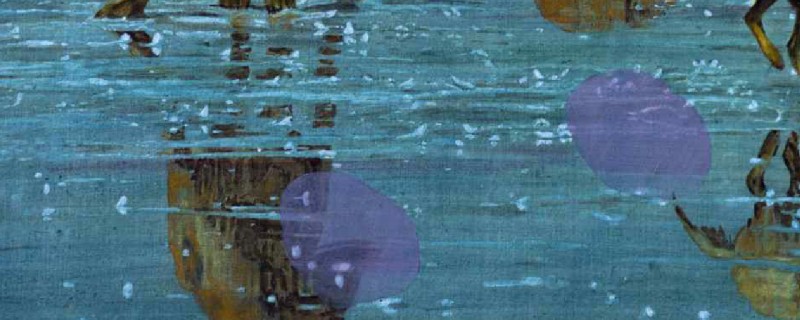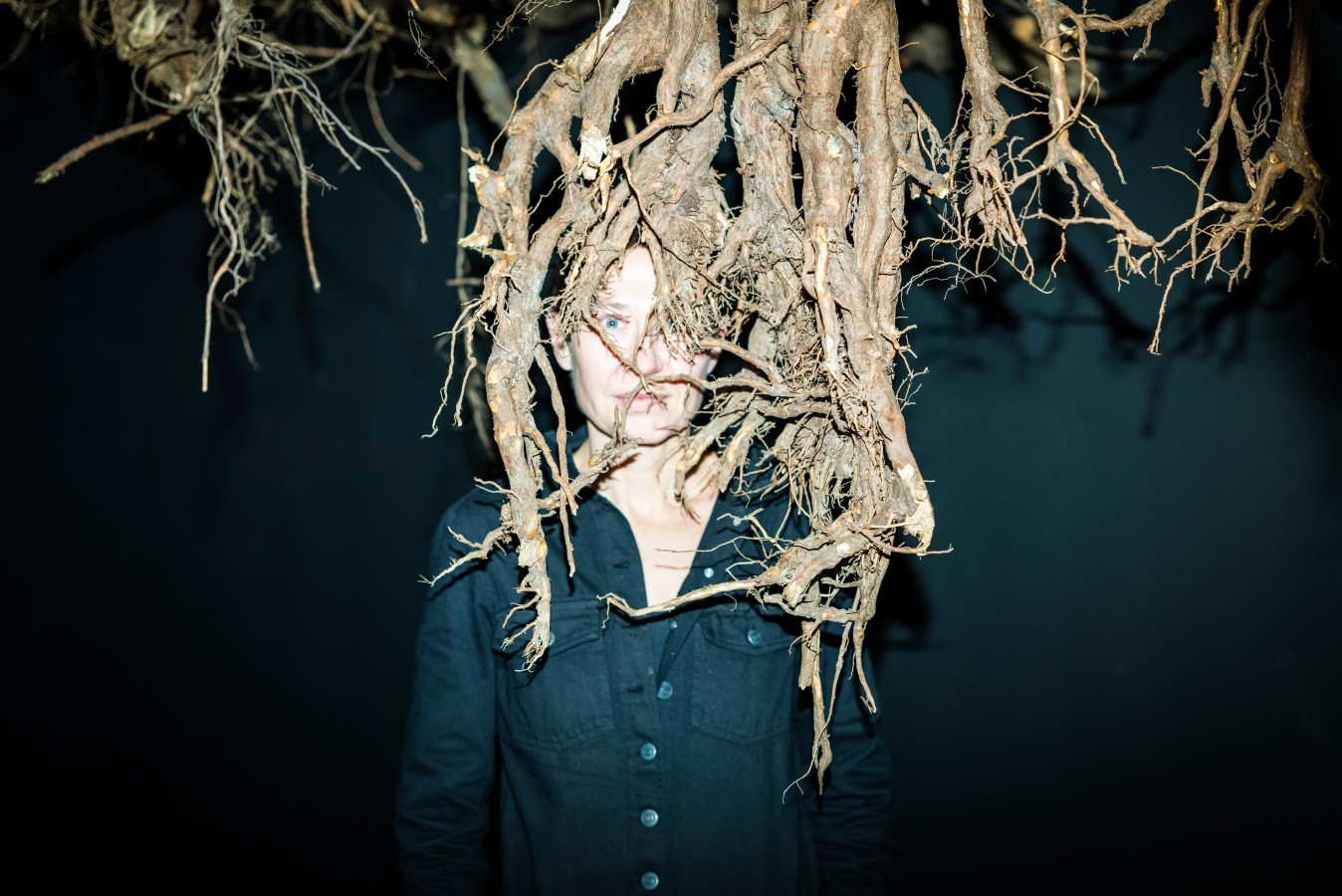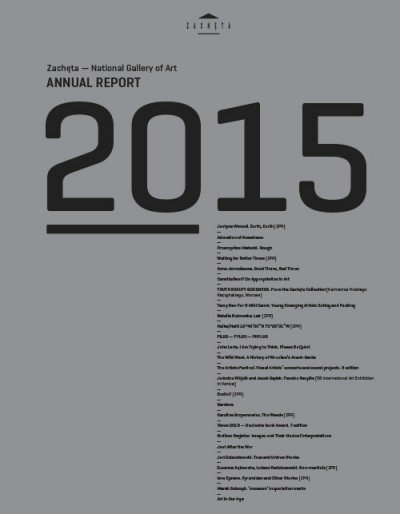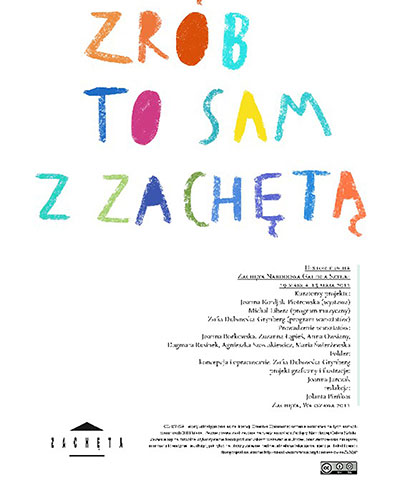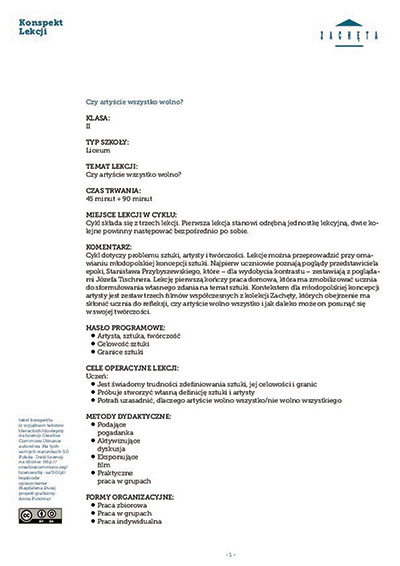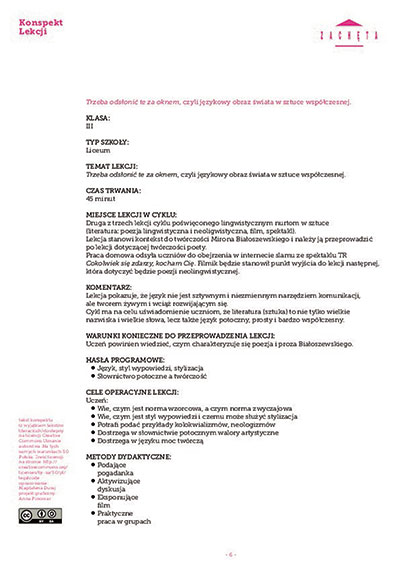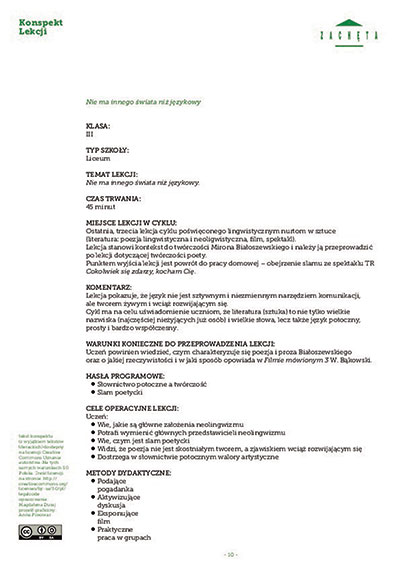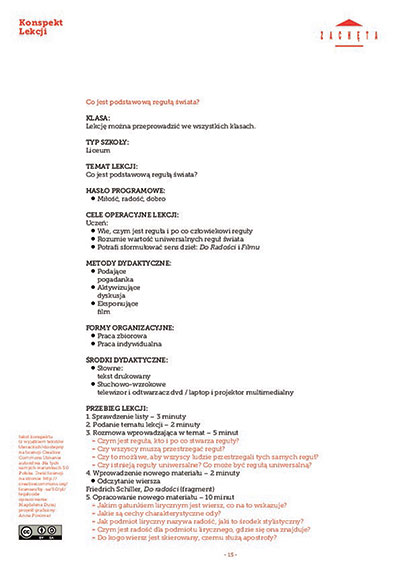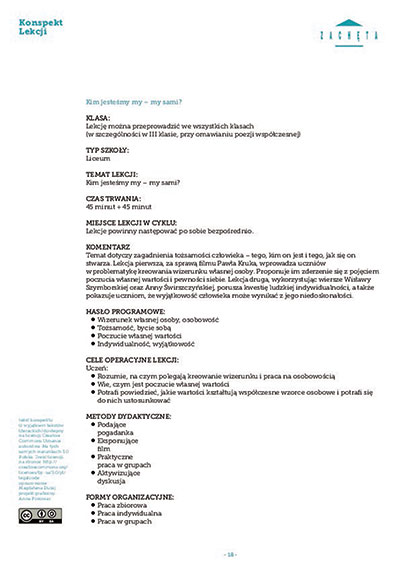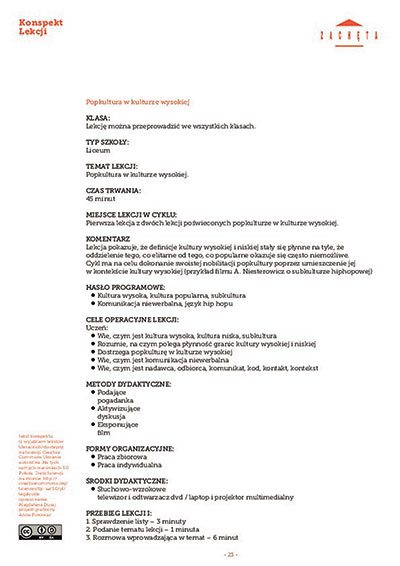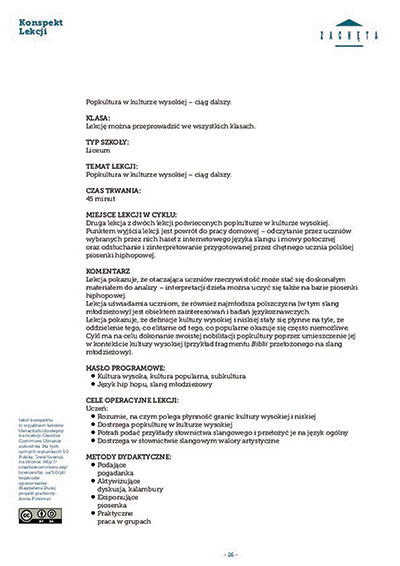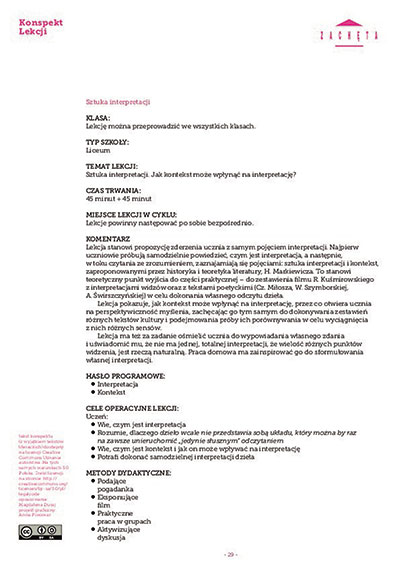Publikacja udostępniana jest na licencji Creative Commons.
Publication date: 29.01.2021
Joanna Rajkowska: What happens when a forest dies? As you know, I was near Warsaw recently. The loggers were very active; the violence perpetrated against the forest was indescribable. It hurt me. Why did it hurt? What happens when trees go under the saw?
Urszula Zajączkowska: A tree is not just wood on a trunk, but a definite, complex being, an organism with a life history much longer than ours. It’s hard for us to understand this because of our modest lifespan — the physical limit of our bodies’ endurance, how lamentably tiny it is compared to the lifespan of the trees. On top of everything, it’s hard for us to understand that a tree doesn’t have to kill in order to live. It manufactures sugar in its cells from light, water and air. Its body, despite being woody, hides living cells — very delicate pith cells. When you break off a branch, that is what you are breaking.
I have never accepted — and never will — arguments that since plants don’t have the pain receptors animals have, that it means they don’t feel anything. As if that made them less perfect. It’s harmful nonsense. Of course they feel, they just do it differently than we do. A signal about a broken leaf in the rosette of a so-called weed — the thale cress — reverberates through the plant several minutes after it happens, and has been written about by science in detail, in large print.
The death of a forest is the death of more than just the trees. Humans associate forests almost exclusively with trees. We see only them, because they are larger than we are, but we’re blind to everything else. We never notice the most important elements on which the life of the forest and our lives depend — bacteria, fungi, mycetozoa, insects. The open, sun-parched space of a felled forest, from which water is draining away, is the true tragedy of these smallest citizens of the world, extreme radiotherapy of the forest micro-world. These organisms cannot escape to anywhere. Orangutans are not the only ones dying in the bush of Borneo, where space is being made for palm trees and their cheap oil for the oil-thirsty West. There, above all, those without eyes and voices are the ones who perish. In fact, no one really knows them, no one will feel for them or cry for them.
What a sad job I had recently: the task of describing the tissues of trees from the Cerrado forest — when we were rushing to at least be able to name them, photograph them before they were massacred. I worked intensively with these samples, writing about their anatomy. A year later, colleagues from Brazil sent me a colourful atlas of our works, full of photographs of trees and bushes. Colour portraits of a bygone era.
If someone rips up the earth and the roots, dragging them into the sun, that tells me that they will soon run rampant there, create their own world, for themselves — roads, cities, pavements. They will even cleanse underground.
This is probably an unpleasant truth, but I want to mention it here: in Polish forests, treated so contemptuously by people today, the roots of old trees always stay in the ground after the forests are felled for our lumber, rotting between seedlings of the new generation, planted or sown naturally. And it happens as we, righteously offended by it all, sit at a wooden table, resting our feet on wooden panels, reading paper books about how horrible humanity is.
You don’t think humanity is horrible? Is it only the hypocrisy that hurts? I’ve had terrible, dark thoughts for years now. That it would be better if we were not here. The harmony of the world would not be disturbed.
It’s hard to say what the harmony of the world really is. What temporal perspective do we use to note any cycle of nature, to have the right to use words like harmony or climax? A hundred years or a million? And what level are we looking at things from? Are you asking about the harmony of a lump of dirt surrounding some roots, or about the Amazon? I don’t think that we — humanity — can create any kind of framework, like chapters in a novel, that would lead us to the answer, to some kind of end of the narrative that prevailed in our minds for a moment, bringing us relief.
When a rotten tree falls in a forest, nobody cries for it. From the moment the piece of sky is revealed in the thick of the forest, uncovered by the fall of the corpse of a sick and frail tree, a race starts for saplings to get to the light that was released and reached the forest. Light is good, it lets plants build their bodies, strengthen wood with fibres, lignifying cells, gain strength to be the first ones, before the others. The difference is that those who lose do not destroy others, do not twist their lives, do not poison their shoots, do not hold those who were better in contempt. The only thing that happens is that their branches, those that did not get enough light, dry up. That’s all.
I think that we disturb the order of things at every level. The universe without Homo sapiens — that’s how I imagine harmony. I think it is extremely difficult to visualise our radical dependence on the delicate and complex network of connections between the elements of the biosphere. When I think about that, I see the inhabitants of the Amazon rainforest, standing in front of bulldozers. And yet we must protest because that is what the survival of our species depends on — although even if it all goes to hell, it won’t be a big deal (after all, it’s just one species) — along with a billion other species. Tell me, what do you think should be done to trigger in people a sensitivity and respect for the microprocesses of biology on which we are dependent, to awaken in us the empathy, joy and energy that come from coexisting with other organisms? Without domination, without aggression, without a hierarchy?
I think we need to start with the simplest things: do everything necessary to first notice those others, get to know them — see their eyes and individual leaves, who they belong to. We need to notice them and through that feel that we are not alone in the world, in this incomprehensible tragedy of Homo sapiens that we invented, based on the construct of distinctiveness: nature and me. It’s a great lie we created and then believed, when the only thing in the world is nature. So how can we be good to it if we don’t even know the names of its citizens? We know nothing about it, so if we know nothing — we don’t notice it. Today, people can’t even tell trees apart. I’ve read Stanisław Lem’s letters to Sławomir Mrożek, essays by Czesław Miłosz, stories by Kornel Filipowicz. I’ve talked to old people. People used to see forests and gardens in a beautiful way, some used Latin names. That was only an introduction to their deeper reflection. We don’t even know the names of our neighbours, but we are very eager to use broad words like nature, wilderness and so on. To learn at least the basics of dendrology, you only need a year of focusing on an atlas of plants. Are we really not willing to make this effort for those we supposedly love? If we survive this, perhaps we will get to know birds, mammals, clouds, rivers, the incredibly rich microworld, in order to finally go mad with this edifying love for the world, through these intravenous infusions of knowledge. Humanity is not alone in nature and never has been; awareness of this fact very strongly peels away the layers of the self-proclaimed ruler, its bloated ego. We made it up ourselves. It’s also important that we finally open ourselves up to authentic experiences of encounters with twigs, mud, dirt, to notice those others we’ve already met, to know what they need from the world for life, what their customs are — all of this in order to understand how distant we are from them, on an atomic and a corporeal level. So, I stress here unequivocally, and think in the simplest terms — let us at least make the effort to find out who lives next to us. All we need is a few books and some solid work. It will let us see and feel in a wide spectrum what is beyond our perception — like the fact that plants have their second world underground, away from the light: dirty roots.
So, knowledge and empathetic curiosity. I imagine you recognise completely different tropes in Rhizopolis, since you know so much more about the life of roots. For me, it was a moment of opportunity to present our human, radical dependence . . . And then, when I travelled to the logging sites, I realised the scale of destruction, the cascade effect of the catastrophe . . . Now I wonder if perhaps this theme of mourning is not more important. Since you believe that knowledge can change the way we look at things and awaken empathy, tell me what roots really do. What are they to a plant, and especially to a tree? What are they to each other?
Roots are knots that don’t care about tidiness, a wild spreading of plants. On the one hand, they have a great task — through their geometry, they hold a lump of earth as if in a fist, preventing the plant from falling over, and on the other hand, they have living, extremely delicate tips, hydrated cells that sense their surroundings like no other part of the plant. It’s as if we peeled the skin off our hand and stuck it underground. Those cells are root hairs. They look like white fuzz. The fuzz of the cells, bare, sitting underground in their billions. They are the ones that enter into relations with others (we’re only now learning how), recognise fungi and bacteria, gravity (and therefore the Earth’s core), they give off ions when water enters them, when the plant drinks it. These ions change the roots’ immediate surroundings. That is how a separate microworld is created. Thanks to the roots, thanks to the fact that they’re alive. I’m talking about a space equal to a cubic millimetre of soil. After all, soil is the world’s most life-rich ecosystem. This invisible space, often reduced to a brown line in drawings, is where the most vibrant life on our planet can be found! Just imagine, there can be a million beings in one gram of soil. Compared to that, what is a walk in the woods? What is a tree? What are we? How do we place this in the scale of our eyes? That is where knowledge can help. It’s very simple. We do not impose anything, but we can tell ourselves, with painful honesty: you will never see the essence of the soil. But you can search for it. You cannot sense the time when these cosmic micro-connections of the mineral and organic particles take place in the soil. These pairs form soil aggregates, which last for years. No root can live without them. This marriage of animate and inanimate matter as the essential component of the universe of the roots is so overflowing with meanings that it is surprising that no one is talking about it. A pebble and a pinch of a past life are like a breath in and out, they form the foundation of existence underground. Science talks about it, as well as about the fact that for a root to grow, to not tear itself apart in this subterranean confinement, to not be wounded by the sharp crystals of sand, it formed, over hundreds of thousands of years of evolution, a spot on its tip that commits suicide before this growth. This spot is called the root cap. It’s a horrible image, a group of cells that, already dead, shed and peel off on all those sharp microscopic bits of soil, so the root can grow in the darkness, ever downwards, without pain.
But roots are still not visible. Rhizopolis tries to visualise this, too, putting humans among them in a strong gesture. Look, today we can fly into space, use satellites to talk on the phone, but we lack the imagination and feeling for the existence of roots. The roots that are under our feet. And the forests and the meadows are of no use because people don’t notice the roots there. They don’t notice the roots because they know nothing about them. I myself am aware of only vague scraps of their life.
This reminds me of how my partner, Andrew, chuckled sadly when another probe landed on Mars. He said: ‘That’s great, but it doesn’t change the fact that we still don’t understand bacteria.’.Tell me, is there a chance that science (probably in our wildest dreams) will understand the language of plants? I mean their complex messages that contain tons of information.
Science today is not just adding knowledge. We’ve known for a long time that the science that’s worth getting lost in lies on the frontier of human fantasy. I am absolutely certain that science will undergo the transformation that humanity itself needs. It’s starting right now, and is already at the level of cognition. Most studies of plants are simply a beautiful story of their life and not a specific recipe that would let people dominate the world further. I admit, I can’t stand it when people ask me about practical applications of my studies, like when I take a pot of horsetails (and they’ve been on Earth for 400 million years) to the Aviation Institute to put the horsetail in an aerodynamic tunnel and blow air through it, model the trajectory of the air particles, to see what it is that lets the plant handle these speeding atoms for a long time while I turn my face away from every breeze. They always ask me, what practical things do we get from it, we, humans? Isn’t the burst of imagination enough for them? No. Nature must be used and that is the role of science. So not only artists are prostitutes.
But it doesn’t bother me that science is ensnared by mathematics. It’s a good tool for the imagination. Harnessing it for coding, you can create something beautiful. Look, I used structure tensor equations, reprogramming the code to react with colour to the total chaos of wounded wood cells of a tree. When there is a wound in a tree, the bodies of the cells knot together in chaos. The wood that was previously like the uniform stream of a river begins to resemble a matted tangle of hair. It’s difficult to extract numbers from this disturbed order. I used colour. In the image, you can see the wood cells of a wounded Douglas fir and the maths that orders its cells using colour. Those located to the left are green, those almost naturally vertical are red, etc. Only the colour matters here, or rather its transformation. I believe that science will soon be open to much more than colours in a picture.
Despite all warnings about anthropomorphism, I think that since we can’t empathise with anything other than our bodies, since we have the senses and experiences we have, we should use all these abilities.
I know perfectly well that Rhizopolis is a complete fiction, but like you do with your writing, I try to make people aware of the absolutely fundamental interdependence with other people, like trees, putting them into a certain fictional, somewhat scenographic situation . . .
Anthropomorphism is on the one hand a human curse — precisely because of what you’re talking about, because we, humans, have no other language and live in the trap of our own semantics. On the other hand, this language can also be the source of our salvation — after all, we don’t have any other.
The language of science is mathematics and only mathematics. Of course, it likes to get lost in its own beauty, in the ‘elegant equations’, as Sabine Hossenfelder writes bluntly when she confronts a human being with a thought written in the symbols of differential geometry. Maths is alien to a human and does not reflect any truth. Art can also be alien to people. And that is why Rhizopolis is so phenomenal — we can all get lost in it, mix up our thinking, order and sensitivities, something we have not done for years. You don’t scare people with graphs of increased CO₂ emissions, but you open up a space into which people can enter, helpless against the experience of this supposedly hypothetical, yet so very real dependence, through the absolute truth they cannot escape. The concept of Rhizopolis is not a fantasy. It is an organic truth about the interconnectedness of beings, the greatest beneficiary of which is undoubtedly humanity. Humanity, experiencing the drama of loneliness.
And now we cannot believe that we, people, and they, plants, animals, lichens, mycetozoa, will ever communicate, because we refuse to think that they might have something to say to us. Who are we that they should want to relate to us in any way? This teaches an appreciation for those others that is lost today. For them to simply be. So, when we finally knock ourselves from this throne of anthropocentrism, based on world domination, there might be a chance that we will notice the distinctiveness of nature, that we can live next to the beautifully different, share the space in all respects of our shared distinctiveness, including the fact that a tree might simply not care about us and not notice us through its hundreds of years of life. And we will never fully feel it or understand it. Wisława Szymborska summed this up with the razor-sharp language of her poetry in ‘The Silence of Plants’.
This fundamental interdependence you speak of and think of so densely, I think that it is not only the awareness of the existence of others, but also feeling the influence of the physical fields of the world, like light or gravity. There is no light in Rhizopolis, but there is gravity. You explore this very deeply. We know very well how many tons of tree carcasses people now have over their heads. What the potential energy is that could be released if not for the supporting structure. So, let people have those roots there for as long as possible; let them feel that if they fall, we all fall. For now, there is no need to die. You can enter the darkness, into the spreading roots of the Rhizopolis subterranean world of trees and linger there in silence, disappear, immerse yourself in the relation of tons of dead tree parts with your own, frightened, tender body.
Ha, I didn’t even think of gravity! Despite all the calculations we did! On the other hand, anthropomorphism is an expression of our helplessness and, paradoxically, our power. We imagine what our body would feel if a hand with its skin peeled off were a root, we close our eyes and observe light through the skin of our eyelids, trying to understand how light penetrates cells with chlorophyll. These imaginings can be scientifically illegitimate (and even wrong), but they bring us closer to plants as other beings. If it is not followed by imagination and empathy, science will never lead us to closeness with other species. In turn, bodily intuition itself, without scientific foundations, quickly degenerates into naive dilettantism.
We only have this body with a limited number of receptors, we have eyes that only see a certain section of the spectrum, ears that only hear certain frequencies, we only live a few decades. We move through the world quite clumsily, and that defines the limited field of our empathy. And now, finally, I’ve reached the moment when I can say after that an overlong introduction, that this frailty of the body and its weakness, and consequently, its dependence, is the most important field of work for me. When I work within this weakness, it seems to me that I am opening doors to the most important regions of sensitivity towards other beings. I try to pass the reality I’m working with through the body and disappear in the process of ‘filtering’. I deeply regret that the notion of embodiment, which I inherited from Eastern artistic practices, is slowly being pushed out by methods of representation. The tree roots in Rhizopolis had a long way to go to end up above our heads in a simple gesture of elevation — above us. Their root hairs travelled through my synapses, and the stumps through my spinal cord.
I see, hear and feel most in the laboratory or in the forest, when, in a sense, I lose myself. I am not there at all, my body is not there, not my mind, nothing, like when I play Syrinx on the flute, or when I look at a leaf. That’s when I’m completely irrelevant. I lose time then; you could say I am not alive. The deeper I sink into this state, the longer I later see in my mind’s eye those plant phantoms, the micro-movements of the leaf, the death of cells, the strange shadows and all the expressions of the life of those others that must have taken place at that time, that plant themselves in my imagination to this day. But above all, I don’t remember myself from there at all. That’s why I think the road to empathy and imagination leads through the capacity for sensitive, pure openness based on humility and meekness, on reduction of the ‘self’, grown over the centuries, on making amends with nature (also with people, because why not?), with a profound awareness of the distinctiveness of beings and the greatest respect for them, that is, through knowledge.
That’s when this ‘looking’ is in a sense not my ‘looking’: it’s from the world, through the world, for the world. That is why I believe that when people immerse themselves in Rhizopolis, they will, in a way, lose themselves, too, through this alternate reality you have created. And it doesn’t matter that in nature, the roots hanging in the air would not survive a week, because they have been ripped out of their confinement in the soil, away from the proximity with the others with whom they formed relations over the years. Those in the exhibition, if they had been chopped up and burned in a power plant, would have been heating radiators in Warsaw long ago. Nobody would think about where the gentle waves of heat in our homes home from. But you dragged them out and you show them to people, creating the scenery of a world that is only seemingly futuristic, since our existence has always been based on them. No one can ever escape it.
-
01.02 – 08.08.2021Joanna RajkowskaRhizopolis
The project takes us into the world of a hypothetical future for humanity on planet Earth after the expected great catastrophe ending the current human era. In the Anthropocene, we have realised that the world has changed irreversibly, and its survival, including that of the human species, is called into question.
Zachęta – National Gallery of ArtZachęta
